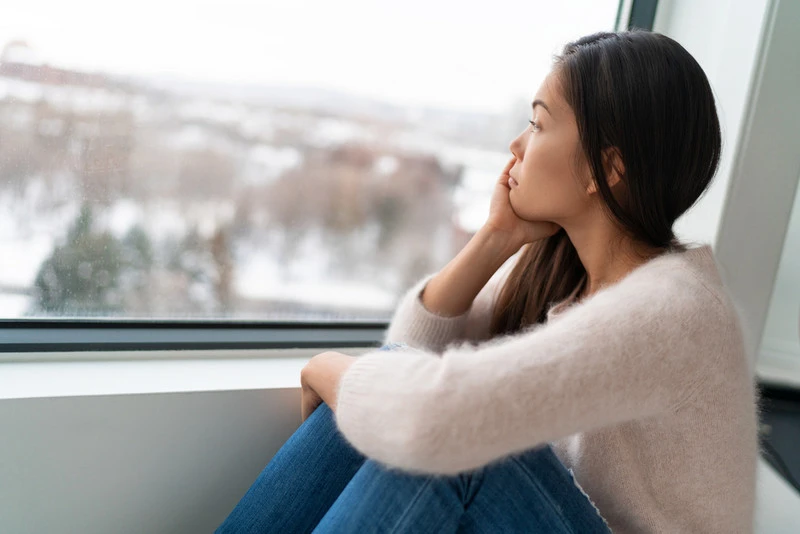Seasonal affective disorder therapy
Seasonal affective disorder (SAD) is a depressive order that has a seasonal pattern, which typically manifests with the onset of autumn or winter. It can develop into a mental illness where mood changes and depression are more serious and it affects the person’s ability to manage daily activities. However, it is treatable through seasonal affective disorder therapy. A well-researched therapeutic option for seasonal affective disorder is light therapy. Artificial light is used to combat SAD, which can be brought on by the absence of natural daylight throughout the winter.
Psychotherapy and prescription drugs are two other typical forms of treatment. Psychotherapy techniques such as cognitive behavioral therapy (CBT) patients learn to recognize and question unfavorable thought patterns to alter their reactions and behavior. This improves emotional regulation and teaches coping mechanisms.
Psychological therapy can aid in easing the severity and anxiety brought on by psychosis. There are several forms of psychotherapy that include cognitive behavioral therapy (CBT), individual, group, and/or family talk therapy. These forms of therapy aim to increase the patient’s self-assurance and skill set to better manage their condition, achieve independence, and live fulfilling lives.

Who and how we help
SAD therapy for adults
While SAD can affect adults in spring and summer, it typically occurs when the cold, dark weather arrives and then subsides in spring or summer. SAD symptoms are comparable to other forms of depression, which may worsen for some people if they do not receive treatment. It is possible to recover from this seasonal affliction with SAD therapy.
Different therapies may be recommended depending on the person’s health and symptoms. More light exposure or undergoing light therapy can help relieve seasonal depression. Talk therapies help eliminate or control negative feelings and thoughts associated with SAD. Medication may be prescribed such as antidepressants to balance the elements that affect energy and mood.
SAD therapy for adolescents
SAD is more common in teenagers and young adults than in older people. Parents should therefore be mindful of whether their teen’s mood drastically alters with the changing of the seasons. However, with the perfect mix of age-appropriate SAD therapy techniques, adolescents can stabilize their mood, and get back to a normal level of functioning at school and at home.
A younger person’s understanding of the need for medication treatment can be facilitated by therapy, and it can even increase the medicine’s efficacy. A successful recovery from depression related disorders also considers root factors such trauma, low self-esteem, and attachment problems. Phototherapy may also be incorporated to complement the treatment plan.
SAD therapy treatment steps
Results-driven care helps people reframe negative thinking in the direction of hopeful and self-compassionate ideas and feelings by teaching them healthy coping mechanisms. Some people may be more susceptible to SAD if there is a family history of depression. Trained clinicians normally do a physical examination and a psychological assessment to make a SAD diagnosis.
Lab tests may also be useful to determine whether a thyroid condition or another medical condition may be a contributing factor. There are several different therapies for seasonal affective disorder and the doctor will recommend the most appropriate for the best outcome. The most popular treatments include light therapy, cognitive behavioral therapy, and antidepressant medication to relieve severe symptoms.

The benefits of therapy for seasonal affective disorder
Therapy for seasonal affective disorder usually includes different therapy approaches and medication to help the patient cope with their symptoms while minimizing their effects. If you consistently feel low, depressed, melancholic, lethargic, and suffer from insomnia for two or more weeks at the change of seasons, you may benefit from treatment. The Good Health team are knowledgeable and experienced with helping patients synchronize their circadian rhythms, balance serotonin levels, and address emotional or mental disturbances with the goal of improving symptoms of depression and building resilience to prevent relapses. If left untreated, SAD can lead to issues at home, at work or school, and in interpersonal interactions. Treatment for other mental health conditions like bipolar disorder, substance use disorder, or anxiety may also be complicated by SAD.
FAQs
How dangerous is SAD?
It is important to take any mental health problem seriously because it can deteriorate and trigger other issues related to work, school, and relationships. SAD is a type of depressive disorder that can lead to substance abuse, and behaviors that may be harmful.
How to know you need seasonal affective disorder therapy?
Each person’s SAD presents differently. While some individuals have mild symptoms, others experience severe ones that have a significant impact on their day-to-day activities. Anyone exhibiting SAD-related symptoms, regardless of severity, will benefit from SAD therapy.
Who is at risk of developing SAD?
Seasonal affective disorder is more common in women than in men and it occurs more frequently in younger adults than in older people. Other risk factors include having a family history of depression or other mental health conditions, living far from the equator, having low vitamin D and serotonin levels.
Is cognitive behavioral therapy for SAD effective?
For the acute treatment of SAD and depression, cognitive behavior therapy (CBT) is effective as it has shown to have a lasting impact that guards against relapse and recurrence. CBT focuses on resolving false beliefs and negative information processing.
How long is a treatment for SAD?
Generally, SAD symptoms can improve within a few weeks of starting treatment. Recurrent major depressive episodes are a hallmark of SAD, therefore depending on the symptoms, long-term and maintenance treatment may be advised.
Is online therapy for seasonal affective disorder effective?
Patients can conveniently, safely and effectively engage in online therapy sessions with a psychiatrist for SAD treatment. Cognitive behavioral therapies, psychotherapy, and medication management can all be incorporated into an online treatment program.
Don't hesitate to contact us
Have any questions?
Please complete the form below and we will get right back to you.